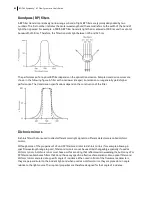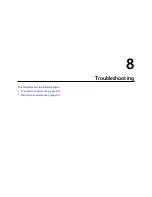
Optical filter theory
Optical filters modify the spectral distribution of light scatter and fluorescence directed to the detectors. When
photons encounter an optical filter, they are either transmitted, absorbed, or reflected.
Photons
Transmitted
Photons
absorbed
Photons
reflected
Even though an optical filter is rated at its 50% transmission point, the filter passes (lets through) a minimal
amount of light outside of this indicated rating.
The slope of an optical filter transmission curve indicates filter performance. A relatively steep slope indicates a
high-performance, high-quality optical filter that provides deep attenuation of out-of-band wavelengths. A less
steep slope indicates that more light outside the rated bandwidth is being transmitted.
Types of optical filters
There are four types of filters.
l
Longpass (LP) filters
Transmit wavelengths at or longer than the specified value.
l
Shortpass (SP) filters
Transmit wavelengths at or shorter than the specified value. This type of filter is not
recommended.
l
Bandpass (BP) filters
Pass a narrow spectral band of light by combining the characteristics of shortpass
filters, longpass filters, and absorbing layers.
l
Notch filters
Pass all frequencies except those in a stop band centered on a center frequency. They are the
opposite of bandpass filters.
The BD FACSymphony™ A1 uses LP filters and BP filters.
80
BD FACSymphony™ A1 Flow Cytometer User's Guide
Содержание FACSymphony A1 Flow
Страница 1: ...FACSymphony A1 Flow Cytometer User s Guide 23 23437 01 2022 07 For Research Use Only ...
Страница 6: ......
Страница 10: ...This page intentionally left blank ...
Страница 24: ...This page intentionally left blank ...
Страница 36: ...This page intentionally left blank ...
Страница 50: ...This page intentionally left blank ...
Страница 87: ...More information l Running a performance check page 55 Chapter 7 Technical overview 87 ...
Страница 88: ...This page intentionally left blank ...
Страница 96: ...This page intentionally left blank ...
Страница 120: ...This page intentionally left blank ...
















































